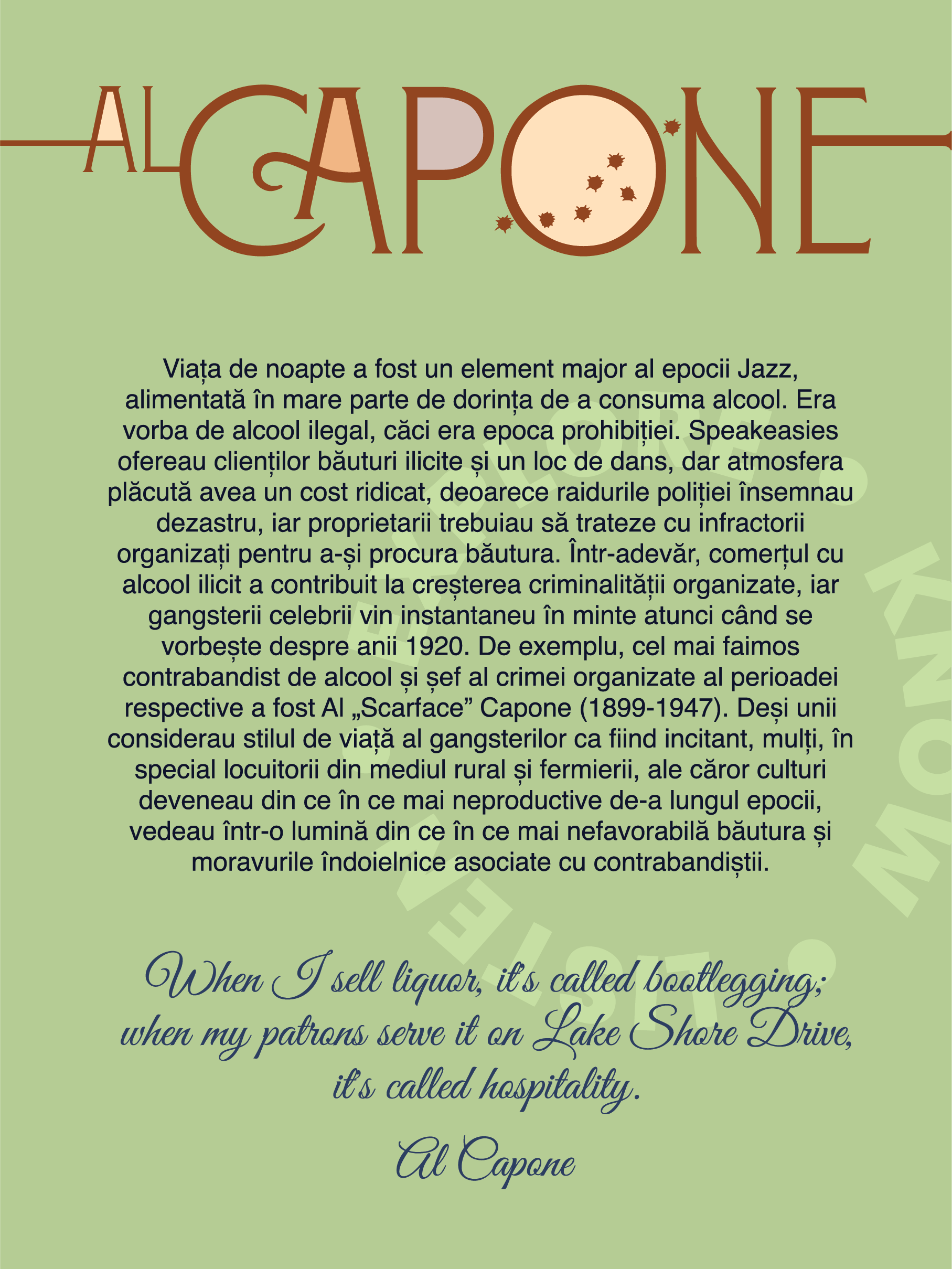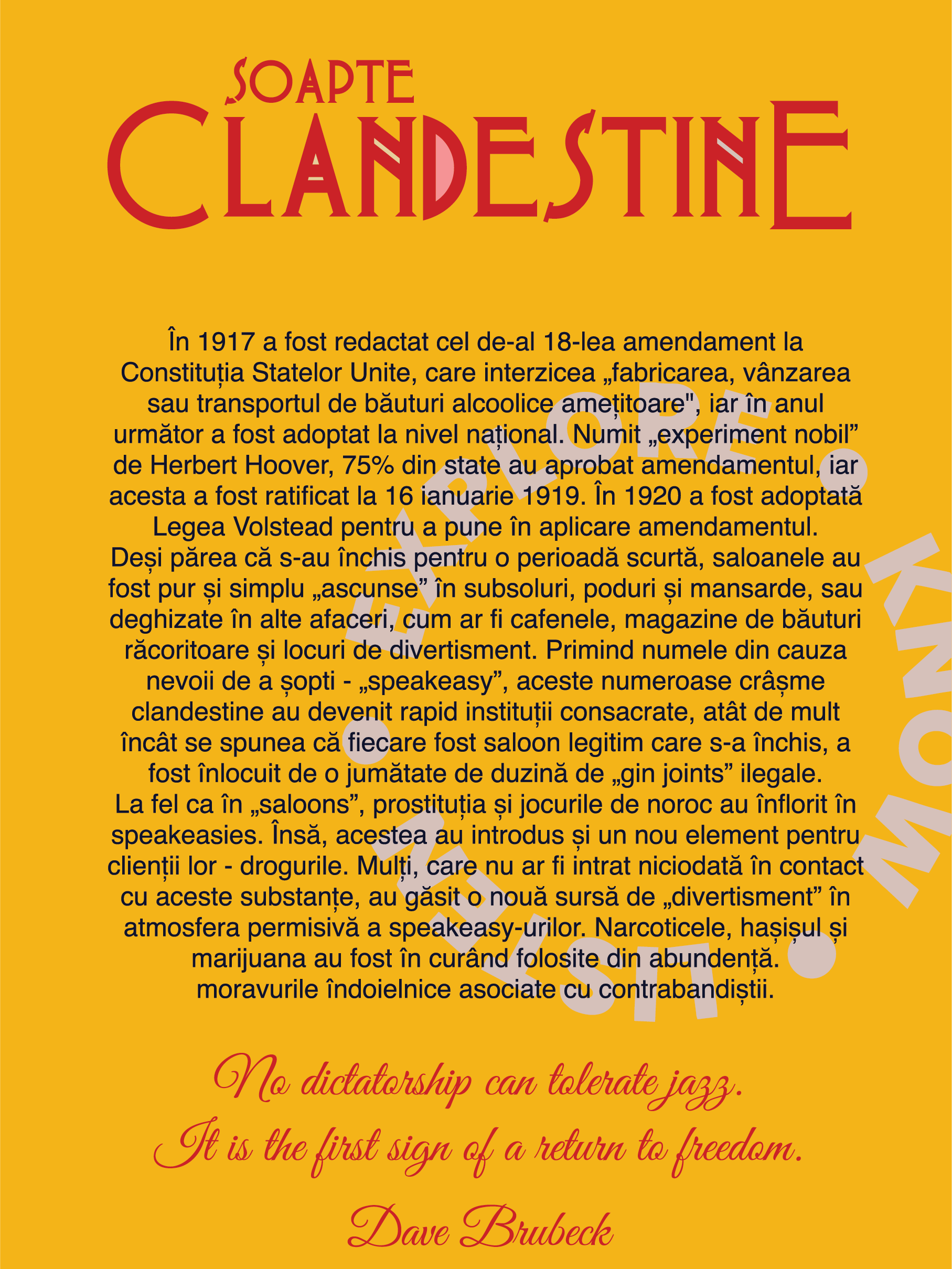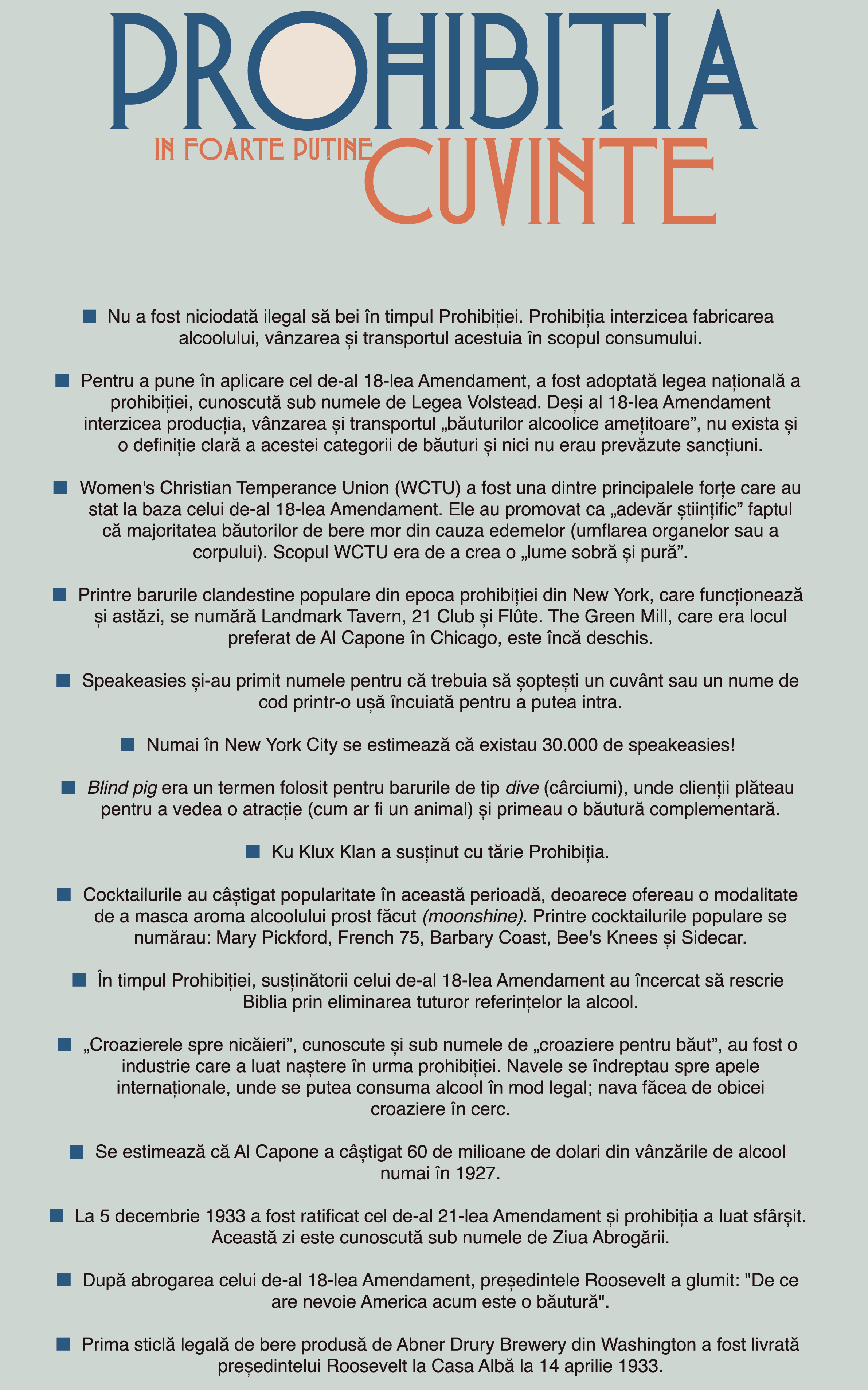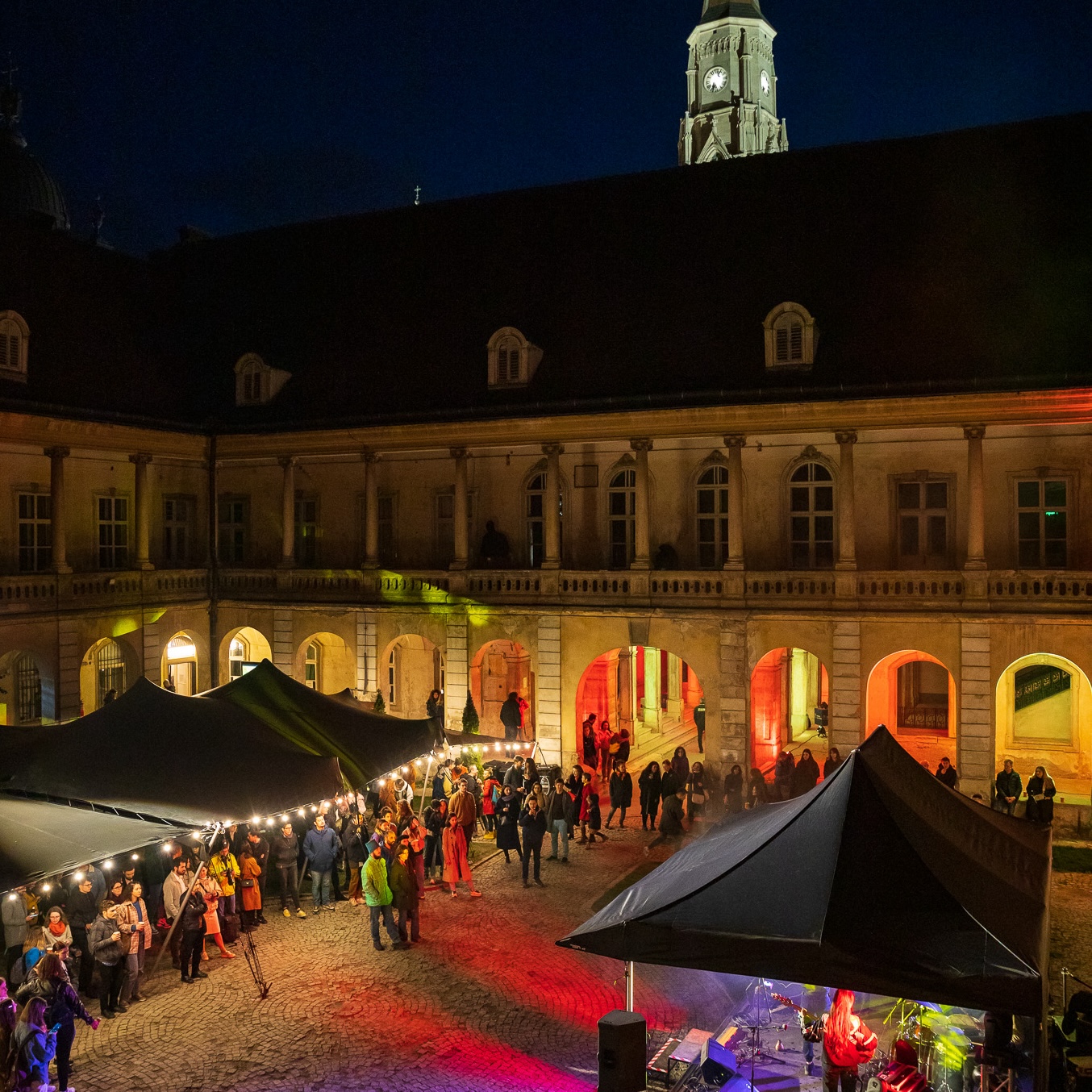PROHIBITION

(P28) AL CAPONE
The nightlife was a major element of the Jazz Age, fueled largely by the desire to consume alcohol. It was illegal alcohol, as it was the era of prohibition. Speakeasies offered customers illicit drinks and a place to dance, but the pleasant atmosphere came at a high cost, as police raids meant disaster, and owners had to deal with organized criminals to procure their alcohol. Indeed, the trade in illegal alcohol contributed to the rise of organized crime, and famous gangsters instantly come to mind when talking about the 1920s. For example, the most famous bootlegger and organized crime boss of the time was Al “Scarface” Capone (1899-1947). Although some considered the gangsters’ lifestyle to be exciting, many, especially rural residents and farmers whose crops became increasingly unproductive throughout the era, viewed alcohol and the questionable morals associated with bootleggers in an increasingly unfavorable light.
When I sell liquor, it’s called bootlegging; when my patrons serve it on Lake Shore Drive, it’s called hospitality. – Al Capone

(P29) CLANDESTINE WHISPERS
In 1917, the 18th amendment to the United States Constitution was drafted, which prohibited “the manufacture, sale, or transportation of intoxicating liquors”, and the following year it was adopted nationally. Named the “noble experiment” by Herbert Hoover, 75% of states approved the amendment, and it was ratified on January 16, 1919. In 1920, the Volstead Act was adopted to enforce the amendment.
Although it seemed that they had closed for a short period, saloons were simply “hidden” in basements, attics, or disguised as other businesses, such as cafes, soft drink stores, and entertainment venues. Taking its name from the need to whisper – speakeasy, these numerous clandestine bars quickly became established institutions, so much so that it was said that for every legitimate saloon that closed, a half dozen illegal gin joints replaced it.
Like in saloons, prostitution and gambling flourished in speakeasies. However, they also introduced a new element for their customers – drugs. Many who would never have come into contact with these substances found a new source of “entertainment” in the permissive atmosphere of these places. Narcotics, hashish, and marijuana were soon used abundantly.
No dictatorship can tolerate jazz. It is the first sign of a return to freedom. – Dave Brubeck

(P31) PROHIBITION IN VERY FEW WORDS
- It was never illegal to drink during Prohibition. Prohibition prohibited the manufacture, sale, and transportation of alcohol for consumption.
- To enforce the 18th Amendment, the national Prohibition law, known as the Volstead Act, was adopted. Although the 18th Amendment prohibited the production, sale, and transportation of “intoxicating liquors,” there was no clear definition of this category of beverages and no sanctions were provided.
- The Women’s Christian Temperance Union (WCTU) was one of the main forces behind the 18th Amendment. They promoted the “scientific truth” that most beer drinkers die from edema (swelling of organs or the body). The WCTU’s goal was to create a “sober and pure world.”
- Among the popular speakeasies of the Prohibition era in New York, which still operate today, are the Landmark Tavern, 21 Club, and Flûte. The Green Mill, which was Al Capone’s favorite spot in Chicago, is still open.
- Speakeasies got their name because you had to whisper a password or code name through a locked door to enter.
- In New York City alone, it is estimated that there were 30,000 speakeasies!
- Blind pig was a term used for dive bars, where customers paid to see an attraction (such as an animal) and received a complimentary drink.
- The Ku Klux Klan strongly supported Prohibition.
- Cocktails gained popularity during this period because they offered a way to mask the flavor of poorly made alcohol (moonshine). Popular cocktails included the Mary Pickford, French 75, Barbary Coast, Bee’s Knees, and Sidecar.
- During Prohibition, supporters of the 18th Amendment attempted to rewrite the Bible by removing all references to alcohol.
- “Cruises to nowhere”, also known as “booze cruises”, were an industry that emerged as a result of prohibition. The ships headed towards international waters where alcohol could be consumed legally; the ship usually made circular cruises.
- It is estimated that Al Capone made $60 million from alcohol sales alone in 1927.
- On December 5, 1933, the 21st amendment was ratified and prohibition came to an end. This day is known as Repeal Day.
- After the repeal of the 18th Amendment, President Roosevelt joked, “What America needs now is a drink.”
- The first legal bottle of beer produced by Abner Drury Brewery in Washington was delivered to President Roosevelt at the White House on April 14, 1933.
